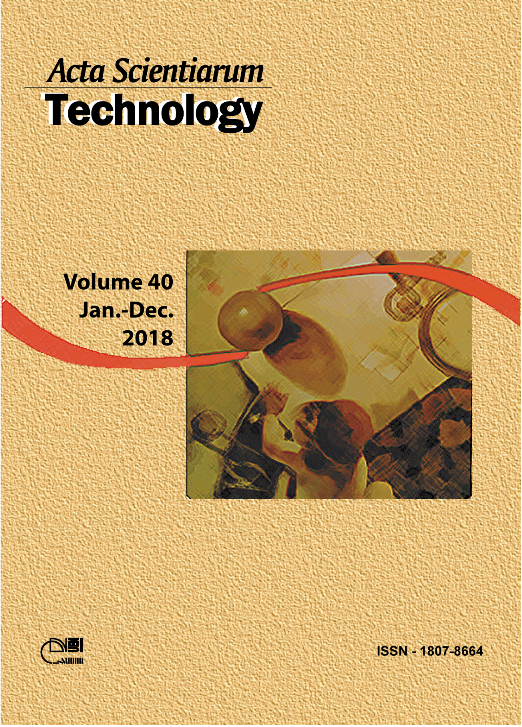<b>Influence of damping ratio on a structural optimization design considering a dynamic analysis within the time domain
DOI:
https://doi.org/10.4025/actascitechnol.v40i1.30593Palavras-chave:
evolutionary structural optimization, dynamic response, damping, finite element method.Resumo
Â
Structural optimization has received increasing attention in several different areas of engineering and has been identified as the most challenging and economically rewarding task in the field of structural design. In this context, the current paper proposes a methodology based on Evolutionary Structural Optimization (ESO) that corresponds to an evolutionary procedure applied for topological optimization in which the finite elements with the lowest stress levels are progressively removed from a structure. The optimization studies are applied for structures subjected to a transient dynamic response where different damping ratios are applied in the physical models, since its determination is extremely hard and can even change the structural stiffness in case of elastoplastic regime. Thus, a nonlinear behavior is considered to evaluate the effects for each damping ratio, and elastoplasticity theory for small strains is extended for a von Mises material with linear, isotropic work-hardening. For this purpose it is possible to evaluate a combination of different optimal topologies for the different damping ratios through an algorithm developed in the Python programming language. The stress levels present such a difference for each linear and nonlinear response, which characterizes a marked change in the structural stiffness of each analyzed model.
Â
Downloads
Downloads
Publicado
Como Citar
Edição
Seção
Licença
DECLARAÇíO DE ORIGINALIDADE E DIREITOS AUTORAIS
Declaro que o presente artigo é original, não tendo sido submetido í publicação em qualquer outro periódico nacional ou internacional, quer seja em parte ou em sua totalidade.
Os direitos autorais pertencem exclusivamente aos autores. Os direitos de licenciamento utilizados pelo periódico é a licença Creative Commons Attribution 4.0 (CC BY 4.0): são permitidos o compartilhamento (cópia e distribuição do material em qualqer meio ou formato) e adaptação (remix, transformação e criação de material a partir do conteúdo assim licenciado para quaisquer fins, inclusive comerciais.
Recomenda-se a leitura desse link para maiores informações sobre o tema: fornecimento de créditos e referências de forma correta, entre outros detalhes cruciais para uso adequado do material licenciado.



















